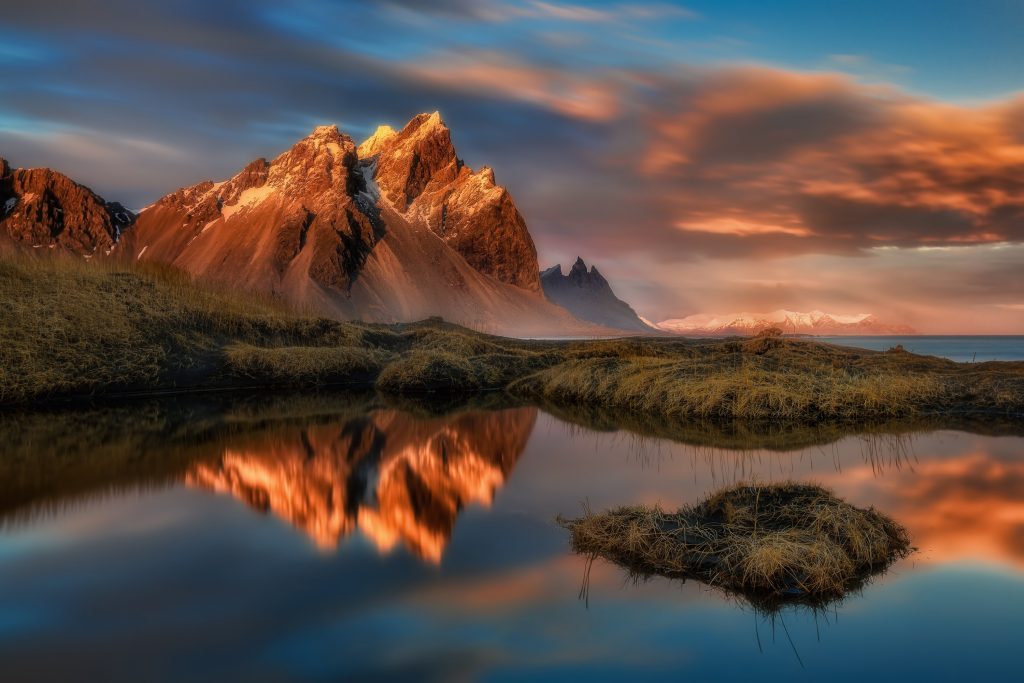
5 Landscape Photography Tips from the Pros
Landscape photography is one of the most rewarding creative pursuits all because you get to spend time shooting at some of the most breathtaking destinations on the planet.
No two days are ever the same when shooting in the outdoors, and each day is a unique opportunity to capture a piece of the planet’s history and create photographs that truly capture the power and personality of a place.
Because of this, many are interested in learning landscape photography. So to help those who desire to create powerful, beautiful, and iconic images in the outdoors, here are five professional tips that will help elevate your landscape photos and take them to the next level.
1. Depth is important
A lot of people will tell you that landscape photography is characterized by super wide images that show a vast, broad perspective. While that is important in many instances, incredible landscape photography can also be captured by using telephoto lenses, at long focal lengths, as well. It’s important to not put landscape photography in either box and to focus on another characteristic that is most important: depth, or depth of field.
Without depth in your landscape images, you fail at telling the true story and showing the incredible layers, textures, and features that are distinctive to the landscapes you shoot. Whether you shoot wide or tight, you must set up your camera to succeed in capturing powerful depth of field.
The best way to do this? Shoot at a higher f-stop value, which allows for a smaller aperture diameter, and greater depth of field. If the light conditions allow, try to stick between f/7.1-f/16. That will result in much more dramatic depth in your images, which is a defining element of landscape photography.
2. Scale is powerful
While landscapes on their own are beautiful, showing accurate and dramatic scale, especially with human subjects, is an incredibly powerful tool you can use.

This does require time to master, as it takes a careful eye to position people for a successful photo. You don’t want subjects getting lost in the shadows of a landscape. Instead, you want them framed and highlighted by a bright sky, feature of land, or ray of sunshine.
Once you master positioning of your subjects though, you can try different techniques, from shooting wide and capturing a vast landscape with your small human subject, to using your long lens to compress the landscape, and add a powerful perspective to your images, making the background landscape appear much closer, with rich, beautiful detail.
3. Learn how to capture contrast
While this also depends on the photographer’s editing style, I believe contrast is incredibly important when shooting landscapes. Whether it’s the contrast between a beautiful blue sky, and a desert landscape, or a lush, green, temperate rainforest contrasted by turquoise waters, you need to be able to capture images that reflect that distinct contrast that highlights these landscapes.
A great tool that helps with capturing that contrast is a polarizing filter. Normally screwed onto the front of a lens, a polarizing filter will dramatically and incrementally increases contrast levels, based upon the photographer’s manual adjustments. It also decreases the amount of glare or reflection an image can have, as well, which means you have a lot of control when you shoot with a polarizing filter. I highly recommend them for your lenses because more contrast and control means more dynamic landscapes.

4. Water is your friend
Water is an incredibly important compound, and it is especially important in landscape photography. Water can allow for two important elements when shooting in the outdoors: movement and reflection.
Water can allow for opportunities to showcase movement in a landscape. Whether it be a raging waterfall or bubbling spring, if you have you tripod with you, you can set your camera to a lower shutter speed — around 1-3 seconds — and watch as your camera captures the smooth movement of the water. That movement contrasted with a sharp, still landscape is beautiful to capture.
Water also provides the opportunity for reflection, which is incredibly beautiful to shoot and is quite popular in landscape photography. A still lake or stream reflecting a landscape is hard to beat. To achieve this effect, it’s best to shoot in the early morning or late in the evening, before the winds pick up or after they calm down.
Just remember: if you do buy a polarizing filter for increased contrast, as stated above, note that they also neutralize a reflection. So be sure to adjust when shooting water reflections and working with polarizing filters.

5. Don’t get “frame paralysis”
This is an issue for people just getting started, and even many professionals. A lot of photographers do a lot of research and put in the time and effort to shoot a certain frame or shot they have in mind, and that sometimes leads to an obsession for successfully capturing a specific image. Then the day comes, and the weather is poor or the light doesn’t quite hit the spots you had planned. It’s important to not be so obsessed with your vision that you fail to see the opportunity around you.
I’ve experienced this first-hand at a recent sunrise shoot. I saw the other photographers all pointing their cameras towards a famous frame that wasn’t quite spectacular that morning. Meanwhile, right behind them was a majestic light show unlike anything I had seen in a while. However, instead of adapting and adjusting, they all remained focused on a shot that never yielded much that morning.
Now, I’m not saying to not be patient and wait for the right moment. Patience is incredibly important in landscape photography. What I am saying is to be prepared for multiple frames and always be flexible. Constantly be alert of your surroundings when you’re in the field and see where light is hitting and how the landscape is changing. Don’t be so zeroed in on “one shot,” that you miss ten other great shots that are around you.
This is why it’s important to have time to scout out an area you’re shooting to know the surroundings, so when the time comes and you’re ready to shoot, you’re always aware of opportunities around you. While commitment is great, don’t be committed to a fault and get frame paralysis.
You May Also Like

Becoming a freelance photographer: a step-by-step guide
June 26, 2019
How to choose a beauty gift card
June 9, 2021

